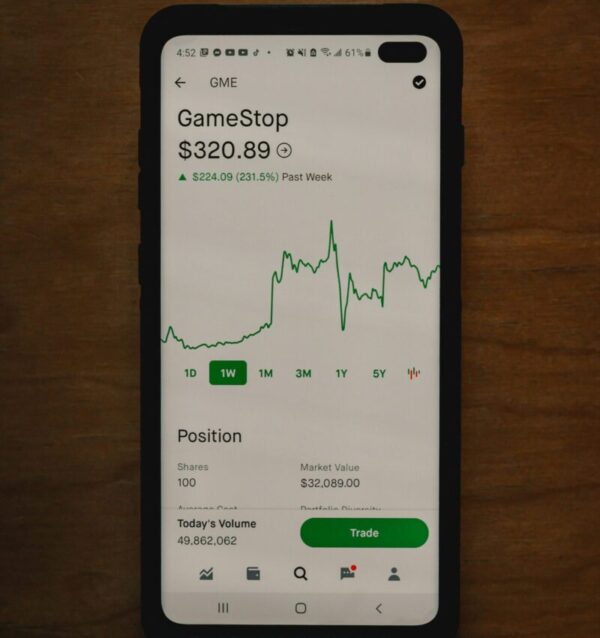Investing can feel intimidating if you’ve never done it before, but it’s one of the most powerful ways to build long-term wealth and achieve financial freedom. Unlike saving, which keeps your money safe but limited, investing puts your money to work so it can grow over time. The good news? You don’t need to be a financial expert to start. With the right mindset, clear goals, and some basic knowledge, anyone can begin investing, even with a small amount of money. This guide will walk you through the essential steps to start investing with confidence.
What is Investing?
Investing is the act of putting your money into assets, such as stocks, bonds, real estate, or funds, with the goal of growing it over time. Unlike saving, which keeps your money safe but with minimal returns, investing allows your money to work for you by generating profits, interest, or appreciation in value. While every investment carries some level of risk, it also offers the potential for greater rewards, especially when approached with patience and consistency. Thanks to the power of compounding, even small, regular investments can grow significantly over the years, making investing one of the most effective ways to build long-term wealth and achieve financial goals like retirement, buying a home, or gaining financial independence.
Understand Why Investing Is Important
Investing matters because it helps your money grow faster than it ever could sitting in a savings account. Thanks to the power of compound interest, the returns you earn begin to generate their own returns, creating exponential growth over time. For example, $1,000 invested today could turn into several times that amount after a few decades, even without adding much more. Investing also helps you stay ahead of inflation, which gradually reduces the value of your money. Simply put, if you want financial security and the ability to reach big goals like retirement or homeownership, investing is the key.
Figure Out What You’re Investing For
Before putting money into the market, think about your financial goals. Are you investing for retirement decades from now, saving for a home in 5 years, or just wanting to build wealth over time? Your goals will shape how you invest. Short-term goals usually require safer investments, while long-term goals can handle more risk since you have more time to ride out market fluctuations. Knowing your “why” gives your investing strategy direction and helps you stay consistent when markets get bumpy.
Learn the Basics of Different Investment Options
Understanding the main types of investments helps you make smarter choices:
- Stocks: Shares of ownership in a company. They offer high growth potential but also carry higher risk.
- Bonds: Loans you give to companies or governments. They’re generally safer but have lower returns.
- Mutual Funds and ETFs: These bundle together many stocks or bonds, offering built-in diversification and making them beginner-friendly.
- Retirement Accounts (401(k), IRA, Roth IRA): Tax-advantaged accounts designed for long-term savings, often the best place to start investing.
- Real Estate: Buying property can be another investment option, though it usually requires more money upfront.
Knowing the basics ensures you don’t just dive in blindly, you’ll understand what you’re buying and how it fits into your goals.
Learn more about the different Types of Investments.
Pick an Investment Strategy
Your strategy is your long-term game plan. For beginners, the buy-and-hold strategy, where you invest in diversified funds and leave them to grow, is often the simplest and most effective. Many new investors also use dollar-cost averaging, investing a set amount regularly (like monthly), which reduces the risk of buying at the “wrong” time. The most important principle is diversification, spreading your money across different investments to reduce risk. By sticking to a clear, simple strategy, you’ll avoid emotional decisions and stay on track.
Choose the Right Platform or Broker
One of the biggest decisions you’ll make as a beginner investor is where to invest your money. The good news is that in 2025, there are dozens of online brokers and investment platforms designed to make the process simple, affordable, and accessible to everyone. The right platform not only gives you the tools to invest, but also plays a huge role in how easy and stress-free your journey will feel.
Why the Platform You Choose Matters
Your broker is essentially the middleman between you and the investments you want to buy. Whether it’s stocks, ETFs, or retirement accounts, you’ll use their app or website to deposit money, make trades, and track your progress. That means fees, ease of use, and features can directly impact your returns and your overall experience. A beginner-friendly broker helps you avoid costly mistakes and makes it easier to stick with your plan long-term.
Features to Look For
When comparing brokers and platforms, keep an eye on the following:
- Low or No Fees: Hidden fees can eat away at your returns. Look for brokers that offer commission-free trades and low account fees.
- User-Friendly Interface: Complicated platforms can overwhelm beginners. A clean, intuitive app makes it easier to learn the basics and stay consistent.
- Account Options: Make sure the platform offers retirement accounts (like IRAs) if you’re investing long-term, as well as taxable accounts for short- to medium-term goals.
- Educational Resources: The best brokers don’t just give you tools, they help you understand how to use them. Built-in tutorials, blogs, or videos are a big plus.
- Automation Options: Features like recurring deposits or robo-advisor services help you stay consistent without overthinking.
- Customer Support: When your money is involved, good customer service is critical. Look for platforms that make it easy to get help quickly.
Types of Investment Platforms
There are a few different types of platforms to consider:
- Robo-Advisors: These are automated investing services that build and manage a portfolio for you based on your goals and risk tolerance. Perfect for beginners who want a hands-off approach.
- Online Brokers: These give you more control, letting you pick and choose investments yourself. Great if you want flexibility and are willing to learn.
- Hybrid Platforms: Some platforms combine robo-advisor features with self-directed options, offering the best of both worlds.
Example: Why Beginners Love Robo-Advisors
If you’re brand new to investing and worried about making mistakes, a robo-advisor can be a great starting point. You simply answer a few questions about your goals and risk tolerance, and the platform does the rest, choosing investments, diversifying your portfolio, and even rebalancing automatically. This hands-off approach saves time and reduces stress, while still helping you build wealth.
Why This Step Can’t Be Skipped
It might be tempting to just sign up for the first investing app you see, but choosing the right platform can make or break your experience. A poor choice could mean paying unnecessary fees, being stuck with limited account types, or feeling so overwhelmed that you quit. On the other hand, a smart choice gives you confidence, support, and the tools you need to succeed, even if you’re starting with just $50 a month.
Ready to Get Started?
The best way to learn investing is to start. Don’t worry about being perfect, you can adjust over time as your knowledge grows. The most important step is to pick a beginner-friendly platform that aligns with your needs and start putting your money to work.
Click here for the Best Investing Platforms For Beginners and see which one fits your goals. Each of these platforms is easy to use and designed to help you start building wealth today.
Decide How Much to Invest
The amount you invest depends on your income, expenses, and goals. A common rule of thumb is to start with 10–20% of your income if possible, but even small amounts matter. Thanks to compound growth, consistency matters more than the starting number. If you can only invest $50 or $100 a month, that’s still progress, and you can always increase the amount later. The key is to start early and stay consistent.
Summary
Starting to invest doesn’t have to be complicated. By understanding why investing is important, clarifying your goals, learning the basics, and starting with even small amounts, you set yourself up for long-term financial success. Choose a reliable platform, stick to a beginner-friendly strategy like dollar-cost averaging, and focus on consistency over perfection. The earlier you begin, the more time your money has to grow. Remember, investing is less about timing the market and more about time in the market, so the best time to start is today.
FAQs
Do I need a lot of money to start investing?
No. Many platforms let you start with as little as $1–$100. What matters most is consistency—small, regular contributions grow significantly over time thanks to compounding.
Be sure to check out What is Compound Interest and How does it work?.
Is investing safe for beginners?
All investing carries some risk, but choosing diversified options like index funds or using robo-advisors reduces that risk. The biggest danger is avoiding investing altogether and missing out on growth.
What’s the difference between saving and investing?
Saving keeps money safe and liquid (like in a savings account), while investing puts money into assets like stocks or bonds that can grow over time but also fluctuate in value. Ideally, you should do both.
Should I pay off debt before I start investing?
It depends on the type of debt. High-interest debt (like credit cards) should usually be paid down first, while low-interest debt (like student loans or a mortgage) can be managed alongside starting to invest.
How do I know if I’m ready to invest?
If you have a small emergency fund, a handle on your monthly expenses, and at least some money you won’t need in the short term, you’re ready to begin. You don’t need to wait until everything is “perfect.”
Can I lose all my money in the stock market?
It’s unlikely if you’re diversified and investing for the long term. Short-term volatility is normal, but historically, broad market investments have grown over decades.
How often should I check my investments?
Beginners don’t need to watch the market daily. Checking once a month, or even quarterly, is enough. Too much monitoring can lead to emotional decisions that hurt long-term results.

